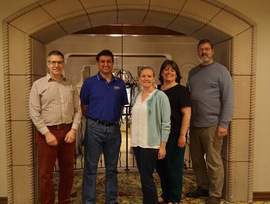The team examined the Spitzer Enhanced Imaging Products catalog to find the most unusual and faintest infrared excess objects serendipitously detected by the Spitzer Space Telescope.
The Spitzer Enhanced Imaging Products (SEIP) catalog is a collection of nearly 42 million point sources from approximately 600 sq. degrees of the sky obtained by the Spitzer Space Telescope during its 5+ year cryogenic mission. Strasburger et al. (2015) isolated sources with a signal to noise ratio (SNR)> 10 in five IR wavelength channels (3.6, 4.5, 5.8, 8, and 24 microns) to begin a search for sources with infrared excess (IRXS). They found 76 objects that were never identified as having an IRXS. Based on this success, we intend to dig deeper into the catalog in an attempt to find more IRXS sources; specifically, by lowering the cutoff for the SNR on the 3.6, 4.5, and 24 micron channels. A preliminary filtering of the database at SNR > 5 yielded 186,000 sources. We will examine the results of various SNR cutoffs until we geta large and reliable set of IRXS candidates by plotting color-color diagrams. After verifying the candidates with a visual inspection and cross-referencing them against known sources in existing databases, we will be left with a list of highly reliable IRXS sources. These sources will prove important in the further understanding of galaxy and stellar evolution. Once identified, they will serve as a starting point for closer study by scientists interested in this area of astronomical research.
Caltech, Pasadena, California
Oak Hill Academy, Mouth of Wilson, Virginia St. Mary's Ryken High School, Leonardtown, Maryland
